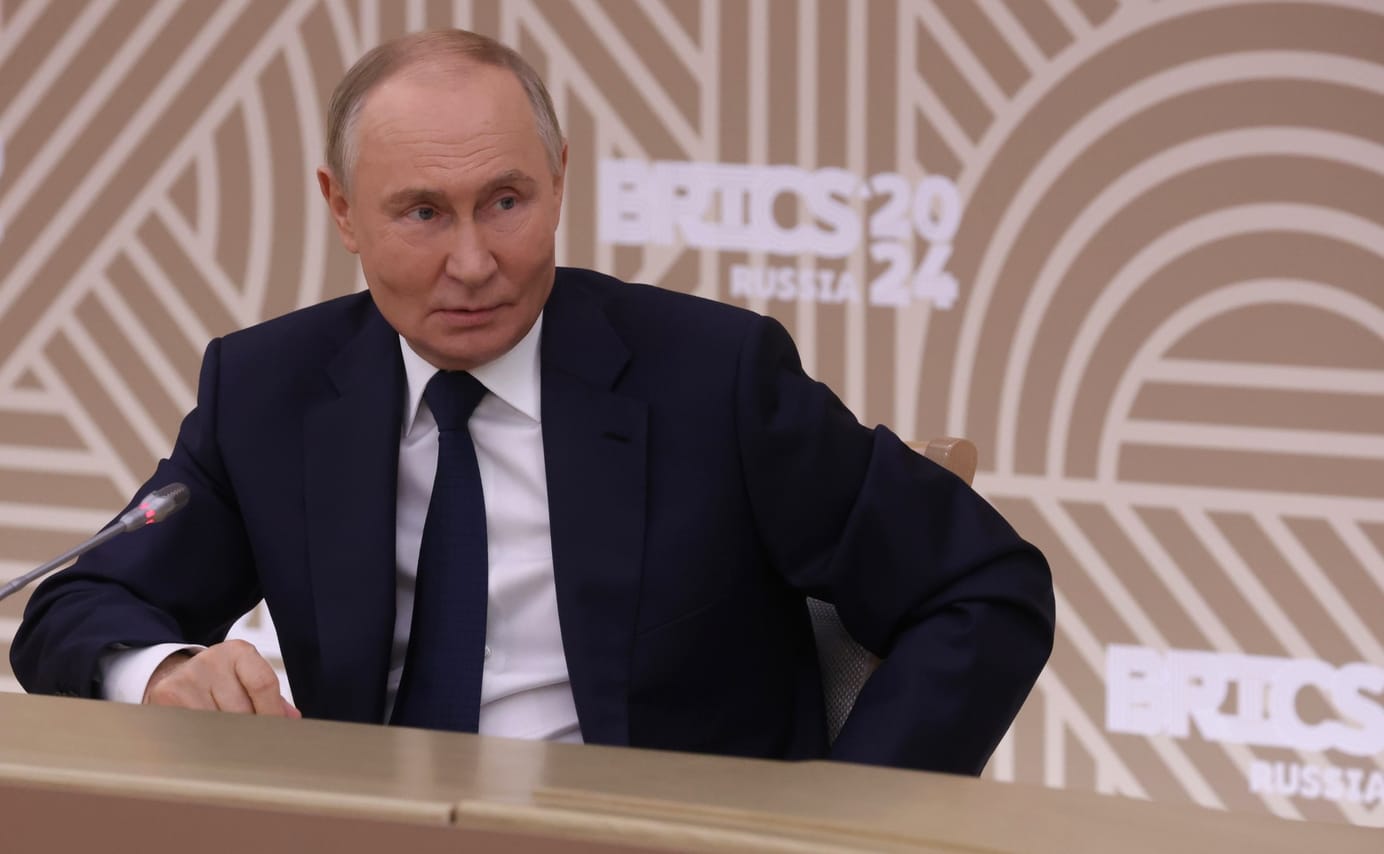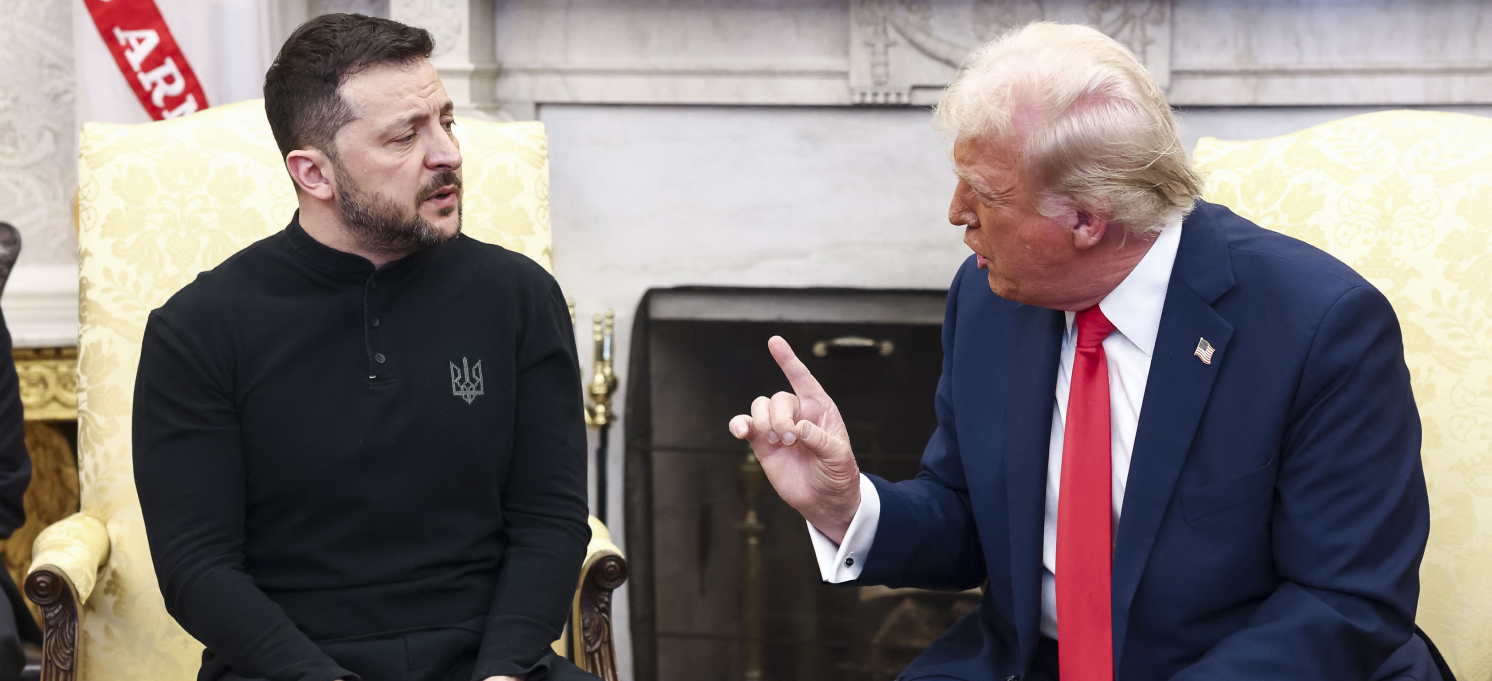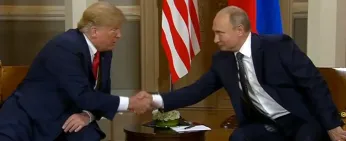
Russia pushes BRICS to take anti-Western turn
Hello! Welcome to your weekly guide to the Russian economy — written by Alexandra Prokopenko and Alexander Kolyandr and brought to you by The Bell. Our top story is a look ahead at the BRICS summit due to take place in Russia next week. We also examine whether an international money laundering watchdog will blacklist Russia at its upcoming meeting (despite Ukrainian lobbying, the chances are slim).
Spotlight on Kremlin for BRICS summit hosted by Russia
Russia will next week host a summit of the BRICS group, which the Kremlin wants to transform from a “non-aligned” bloc into a weapon in its economic war with the West. Above all, Moscow wants BRICS to set up a payments system that is invulnerable to U.S. sanctions. So far, though, this does not look very likely.
What’s going on?
The BRICS summit will take place from Oct. 22 to Oct. 24 in the Russian city of Kazan. A club of emerging economies (Brazil, Russia, India, China and South Africa), BRICS is meeting in its newly-expanded format for the first time. At the previous summit, Egypt, Ethiopia, Iran and the UAE joined the organization. Saudi Arabia also takes part, but is not an official member. Together, these 10 countries represent 35.6% of global GDP by purchasing power parity (more than the Group of Seven major democracies 30.3%). They also represent 45% of the world’s population, compared with the less than 10% that live in G7. BRICS will likely expand further in the coming years: more than 40 countries, including major economies like Indonesia, have expressed interest in getting involved.
Russian President Vladimir Putin has invited more than 20 other countries interested in joining BRICS to Kazan. The gathering is intended to send a message that, despite the West’s efforts to isolate Russia, the country still has many friends. Before the war, BRICS agendas lacked much substance but, since the full-scale invasion of Ukraine, Russia, supported by China (the real driver of BRICS expansion) is trying to make the club into a leading anti-Western platform. The main issue of the previous summit was the creation of a BRICS currency. However, this has been overtaken by the issue of a cross-border BRICS payment system. Moscow has become even more interested in this idea after the imposition of secondary U.S. sanctions, which threaten to reduce its foreign trade significantly.
The summit will also discuss how to replace existing international financial organizations, especially the International Monetary Fund (IMF). Russian Finance Minister Anton Siluanov last week proposed an alternative organization. Before the war in Ukraine, of course, Russia was a member of the IMF, the World Bank, the Bank of International Settlements and other international financial groups. But they have now all frozen relations with Russia. As a result, the Kremlin wants to establish organizations that firstly include Russia and secondly cannot exclude it.
“The global financial system is outdated and does not meet today’s challenges,” consulting firm Yakov and Partners (formerly McKinsey Russia) said in a report ahead of the summit produced with Russia’s Finance Ministry and Central Bank. “Its mechanisms cannot adapt to new realities, which leads to an accumulation of disbalances and increased fragmentation.”
The Yakov and Partners report also acknowledged the problems caused for Russia when it was excluded from the international payments system SWIFT after the full-scale invasion. “The cross-border payment system in its current form has one obvious drawback – the lack of viable competition. This, in turn, causes two problems: the rise of monopoly rent and centralized decision-making… in other words, participants face not just higher transaction costs, but also the risk of exclusion from the system,” the report stated.
What does Moscow want?
Russia has proposed an alternative payment system that would be based on a chain of commercial banks connected via the central banks of BRICS countries. It would use blockchain to store and transfer digital tokens backed by national currencies. This, in turn, should ensure safe and easy currency exchange, removing the need for transactions in U.S. dollars. “The United States can put pressure on Russia’s partners one by one, but this is much more difficult or even impossible if these countries are part of an alternative system that includes important U.S. partners such as Brazil, India and Saudi Arabia,” experts Alexander Gabuev and Oliver Stunkel wrote in a recent article.
The Kremlin has already tried to hedge financial risks using BRICS. After the 2014 annexation of Crimea, BRICS members signed an agreement to create a BRICS Development Bank. This was intended to fund infrastructure projects and create a pool of conditional reserve currencies (an insurance mechanism in case any BRICS country ran into U.S. dollar liquidity problems). However, it didn’t deliver. As soon as war broke out, the BRICS Bank froze all operations with Russia.
The currency pool actually has limited resources, according to expert Stewart Patrick. In addition, it’s vulnerable to conversion, interest rate and insurance risks because it does not have its own synthetic currency pair (comparable tothe special drawing rights (SDR) issued by the IMF), and cannot rely on a risk-free rate at the Bank for International Settlements. It’s not clear how all this will work following the accession of new BRICS members.
The idea of a BRICS synthetic currency pair has not become reality because there is no free movement of capital between the countries in question (the authorities in Russia, India and China restrict cross-border operations and their currencies are not fully convertible). There is also no freedom of labor movement (not least due to geography). Most importantly, economies of all BRICS countries, apart from India, are tied to Chinese demand for raw materials. Additionally, while inflation in China is stable, in the other countries it is more volatile, leading to a desynchronization of monetary policy. Any payment system would likely suffer the same fate.
Trade within BRICS is also asymmetric: with the exception of Russia and China, there are no major trading partners. And only Moscow and Tehran have a need for an alternative system; all the others are happy using SWIFT, and reserve currencies.
Diluting or strengthening?
The accession of new members does not necessarily make BRICS a more powerful group. In fact, it weakens it. As it stands, applications to join have come from Algeria, Azerbaijan, Bahrain, Bangladesh, Belarus, Bolivia, Cuba, Kazakhstan, Myanmar, Nigeria, Pakistan, Senegal, Thailand, Venezuela and Vietnam, as well as Turkiye (a NATO member). These are countries of varying wealth, with different economic models, different political regimes, and located in different corners of the world. If they were admitted, it would inevitably complicate the process of decision-making. And, if BRICS were to grow into a large body, it would end up duplicating many of the functions – and dysfunctions – of other multilateral groups such as the Non-Aligned Movement (NAM) or the G77.
Why the world should care
Russia’s political ambitions, supported by China, are turning BRICS from a nascent economic union into an amorphous club united only by a distrust of the West. And that means countries wishing to join are not motivated by development or economic growth, but opportunism. Moscow, as the loudest critic of Washington, will seek dominance, undermining any horizontal interaction in pursuit of development. While the Kremlin has neither the means, technology, nor weight in the world economy to offer an alternative to the existing global financial system, it seems set on stoking anti-U.S. feelings wherever it can.
Anti-money laundering watchdog to decide whether to blacklist Russia
The international Financial Action Task Force (FATF) will meet Tuesday in Paris, and one of the items on the agenda will be whether to blacklist Russia. Ukraine is not a member of FATF, but continues to lobby for such a step to be taken.
What’s going on?
Ukraine has repeatedly called on FATF to blacklist Russia since the full-scale invasion, albeit without any success. Kyiv’s most recent appeal was in June. Judging by an internal Ukrainian document reported by Politico, the arguments put forward have not changed: Kyiv suggests that Russia should be blacklisted because of its ongoing cooperation with two blacklisted countries (Iran and North Korea), as well as the use of state funds to finance private military companies and terrorist organizations. Another reason, according to Kyiv, is the role of cryptocurrencies and the Telegram messenger app in Russia’s financial system. Experts from the so-called McFaul-Yermak group also recommend FATF blacklist Russia.
Ukraine’s claims about Russia and North Korea will likely be strengthened by multiple reports in recent days that North Korean soldiers are fighting for Russia in Ukraine.
At the Paris meeting, participants will review the composition of FATF’s black and gray lists. Blacklisted countries (currently Iran, Myanmar and North Korea) are effectively excluded from the international banking system, and can only conduct financial operations through intermediaries. FATF believes that blacklisted countries do not comply with anti-money laundering regulations, deny inspection authorities access to their banking records, and make it impossible to gain physical access to assets.
FATF’s regularly-updated gray list includes countries which, in theory, support FATF recommendations and are willing to change their laws. All financial transactions with clients from “graylisted” countries are subject to greater scrutiny from banks and other institutions. In practice, this means some transactions cannot be processed, while others take far longer than usual. Ultimately, this drives up transaction costs, affecting the cost of trade, investment opportunities and even investment ratings. Although Russia is not currently on the gray list, the threat of secondary U.S. sanctions and European regulatory requirements means that operations with Russian companies and citizens face similar levels of scrutiny. However, blacklisting Russia would greatly complicate the situation.
Will Russia be blacklisted?
The obvious opponents of any blacklist are Russia’s trading partners: particularly, China, India, the UAE and Turkiye. Putting Russia on the blacklist would likely halt cooperation in the defense sector, as well as aviation, logistics and atomic energy projects. It would also severely complicate Russian exports of oil, grain, uranium, metals and fertilizers on which many countries depend. This would cause worldwide price increases, and inflation.
Crucially, there are also no formal grounds for blacklisting Russia. At least on paper, Moscow continues to comply with FATF requirements. FATF itself strives for neutrality, and seeks to avoid allegations of politicization: it’s one thing to suspend Russia’s membership because of the war, but quite another to blacklist a country that formally plays by the rules. In other words, the chances of Russia going on the blacklist are negligible.
Why the world should care
Even if Ukraine manages to persuade the FATF to put Russia on the gray list, not much will actually change. Today, most operations in euros or U.S. dollars involving Russian clients go through the U.S. or European banking systems and are closely monitored. Similar transactions with banks in China, Turkiye and the UAE are slow because of U.S. secondary sanctions. As for investment ratings – no-one would care if Russia was downgraded. Global rating agencies stopped evaluating Russia at the start of the war in Ukraine, and withdrew the country’s ratings from publication.
Figures of the week
The World Bank has upgraded its forecast for Russia’s economic growth, reflecting the overheating of the economy. The bank predicted GDP growth will reach 3.2% this year (up from the 2.9% it forecast in June). Currently, Russia’s Economic Development Ministry expects Russian GDP this year to expand 3.9%. The World Bank also raised its projected GDP growth for Russia in 2025 from 1.4% to 1.6%. The figure for 2026 remains at 1.1%.
Between Oct. 8 and Oct. 14, weekly inflation in Russia slowed slightly, from 0.14% to 0.12%, according to the Economic Development Ministry. Annual inflation fell from 8.52% to 8.51%.
In Oct. 2024, inflationary expectations in Russia rose to 13.4%, the highest level this year, according to a survey commissioned by the Central Bank. In September, expectations were 12.5%, down slightly from August’s 12.9%. The October figure is the highest since Dec. 2023 (14.2%). The Central Bank is closely monitoring inflationary expectations as it mulls a decision on interest rates. The next Central Bank board meeting is on Oct. 26.
Further reading
Can the Digital Ruble Shield Russia From Western Sanctions?
Georgian Elections Present Moscow With a Difficult Choice
Moldova’s Presidential Elections and EU Referendum: A Critical Moment





